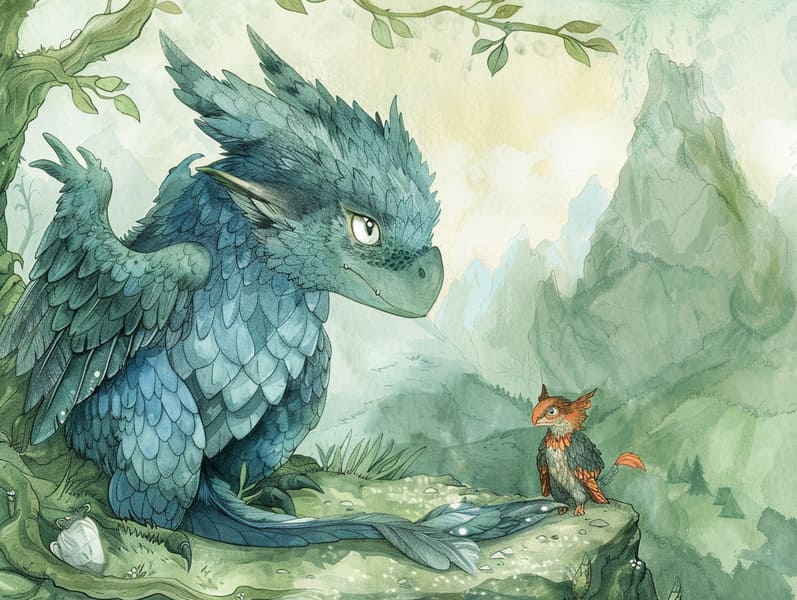The Start of Classic Fairy Tales and Their Consistent Allure.
The Start of Classic Fairy Tales and Their Consistent Allure.
Blog Article

Best fairy tales have deep roots. These narratives have been recounted from one generation to the next centuries before they were ever written down. They sprang from a variety of backgrounds, including African traditions. They were initially told among grown-ups, often carrying themes and messages related to the societal norms and beliefs of the time.
The Brothers Grimm, Jacob and Wilhelm Grimm, were among the first to compile and release many of these beloved stories. Their collection, "Grimm's Fairy Tales," included tales like "Cinder Maid," "Little Brother and Little Sister," and "Snow White," which have since become hallmarks in the world of classic fairy tales. Similarly, Hans Andersen's fantastical stories, such as "The Mermaid's Tale," and "The Duckling that Could," have gained the love worldwide, solidifying their place in the pantheon of beloved fairy tales.
Though they are centuries old, classic fairy tales remain as significant as ever, especially as nighttime stories for kids. These charming stories are now available in various formats, including artistically illustrated books, fantastical animations, and free fairy tales online.
Their enduring popularity can be ascribed to several charming aspects:
Valuable Lessons: Old fairy tales often convey important moral lessons. Stories like "The Wolf and the Liar" teach the virtue of honesty, while "The Tale of the Tortoise and the Hare" emphasize the merits of steadfastness and modesty. These stories offer kids clear distinctions between truth and falsehood, developing their moral compass in a gentle yet meaningful way.
Compassion and Knowledge: Ancient fairy tales frequently depict personalities facing obstacles and hardships, fostering readers to feel with their struggles and root for their triumphs. For instance, "The Tale of Beauty and the Beast" points out the necessity of looking deeper to appreciate the inner core of a person, encouraging kindness and insight.
Cultural Recognition: Many old fairy tales are interwoven with the cultural contexts from which they sprang. Immersing in these narratives can provide informative snapshots into different beliefs, fostering a sense of global understanding and acknowledgment.
Creativity and Imagination: The mythical elements in traditional fairy tales—mythical creatures—inspire children’s creativity. These fairy tales guide readers to fantastical realms, awakening imaginative thinking and a sense of magic that stays a lifetime.
Timeless fairy tales are not only whimsical but also educational. They serve as whimsical tools in strengthening various cognitive and emotional skills in the young. When fairy tales are recited, they strengthen verbal development by teaching new linguistic elements and complex sentence structures. This practice also improves auditory perception and focus, as kids follow the story, ready to see what happens next.
Furthermore, exploring the themes and characters of ancient fairy tales can foster intellectual skills and intellectual skills. Young ones are taught to recognize patterns, forecast, and understand cause and effect. These conversations also facilitate children convey their thoughts and feelings, promoting their emotional intelligence.
In today’s high-tech era, the existence of digital fairy tales has made these tales more acquirable than ever. Internet sites and web apps feature vast collections of traditional fairy tales that can be read or played anytime, anywhere. Fairy tales read out loud are particularly widespread, extending an charming way for the young to enjoy these enchanting tales. Narrated books and read-aloud videos carry characters and settings to life, often enhanced by spellbinding background sounds and music that elevate the tale-telling adventure.
The timeless appeal of classic fairy tales lies in their ability to modify to today's world while retaining their key morals. Contemporary takes of these fairy tales often showcase more multicultural protagonists and modern settings, making them relevant to today’s audience. However, the underlying themes of braveness, kindheartedness, and fair-mindedness remain unchanged, continuing to touch audiences of all ages.
Fairy tales also offer a sense of protection and comprehensibility. They confer upon a well-structured narrative with a apparent beginning, middle, and end, often ending with the closure of conflicts and the triumph of righteousness over wickedness. This reliability can be consoling for kids, proffering a sense of sturdiness in an always shifting world.
Old fairy tales continue to delight and guide new generations, maintaining their magic and pertinence in modern society. As children's night stories, they grant access to a perfect blend of enchantment and education, furthering moral values, empathy, and creativity. The existence of online storybooks and the commonness of fairy tales told out loud assure that these classic fairy tales remain within reach to new generations.
By safeguarding and recounting these narratives, we continue to treasure the rich tapestry of tales and cultural heritage. Whether you are reading a vibrantly illustrated book, accessing a these guys electronic collection, or hearing an read-aloud book, the majesty of ancient fairy tales is always within reach. These stories teach us of the timeless spell of storytelling and its ability to gather us across time and space.
Be it you are exploring a vividly illustrated book, exploring a digital library, or hearing an spoken story, the enchantment of Grimm's fairy tales is always within reach.
These fairy tales point out of the immortal effect of fairy tales and its ability to connect us across eras and regions, weaving a spell that delights and instructs alike.